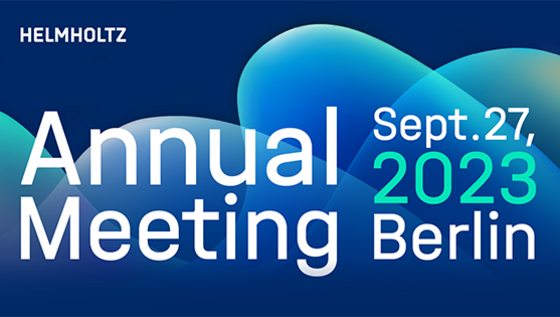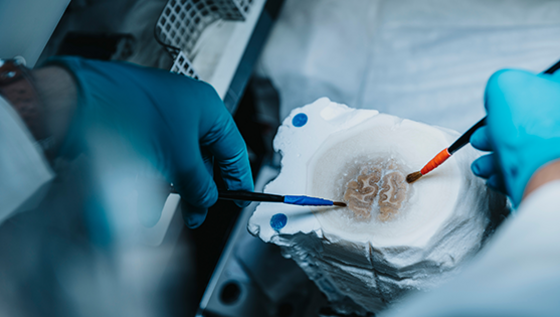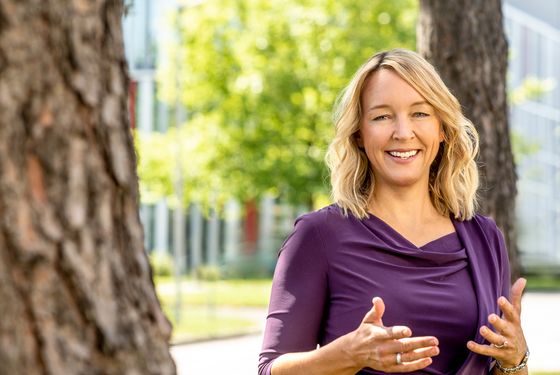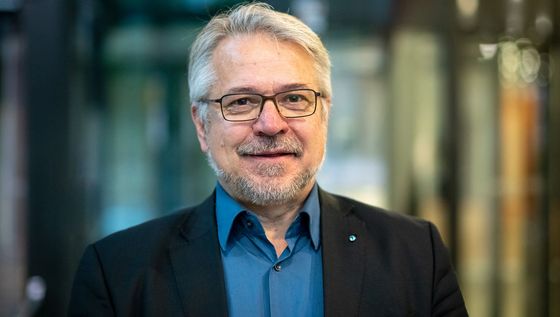|
||||||||
|
|
Helmholtz Update becomes Helmholtz Monthly: We are pleased to present our completely renewed newsletter! Every month, we will provide you with important news about the Helmholtz Association and bring you closer to the staff of the Association. In the editorial, the editors take turns so that you can see who is behind Helmholtz Monthly. In this issue, read what it means for German science and for Helmholtz that the UK is once again part of Horizon Europe. Plus: The Human Brain Project comes to an end this month. We reflect on what it has achieved and why the end is also a beginning. And Dietrich Borchardt comments on the National Water Strategy. We wish you an exciting read. |
|
|
|
|||||||||||||||||||||||
|
|
|
|
|||||||||||||||||||||||
|
|
|
|
After ten years, the Human Brain Project (HBP) comes to an end this month. With 155 cooperating institutions from 19 countries and a total budget of 607 million euros, the EU flagship project was one of the largest research projects in Europe. Forschungszentrum Jülich played an important role with its Brain Research Institute and the Jülich Supercomputing Centre. Once completed, a scientific symposium was held in Jülich in mid-September. Key scientific achievements include a three-dimensional digital atlas of the human brain with unprecedented detail, computer modeling of patient brains with epilepsy and Parkinson's disease for personalized medicine, new breakthroughs in artificial intelligence, and a digital research infrastructure - EBRAINS - that will continue to be an invaluable resource for the entire neuroscience community after the HBP ends. Data science and computing power played a critical role in the HBP. The researchers combined methods from high-performance computing and artificial intelligence to better understand the complex organization of the brain. The project has contributed to a deeper understanding of the brain's complex structure and function and has enabled new applications in medicine and technological advances. The output is also impressive in numbers: HBP researchers have achieved numerous scientific results published in over 3,000 papers, advanced medical and technical applications, and developed over 160 freely accessible digital tools for neuroscience research. Katrin Amunts from Forschungszentrum Jülich has been scientific director of the HBP since 2016. In an interview, she takes stock. (Image: Maren Fischinger, Forschungszentrum Jülich) Also: Scalpel instead of shotgun New Helmholtz Institute researches materials of the future |
|
What drives me is curiosity. Finding answers to unanswered questions, solving scientific riddles and puzzles through experiments, encountering the unexpected and seeing or measuring with my own eyes how life works, that's incredibly exciting. I am fascinated by discovering new genes, metabolic pathways or molecular mechanisms and understanding the complexity of the genome to some extent. Equally exciting for me is that science is so international and interdisciplinary. It's great to work with students, PhD students, postdocs and colleagues from all over the world. I try to act as a mentor, hopefully giving young people something for the future and training them as scientists. I would even go one step further and call it my vocation.
My next project would be to have more children and watch them grow and develop! In terms of research, it would be large studies on calorie restriction or interval fasting and 'anti-aging' diets. Doing studies in people who eat this way and finding out how it affects them with sampling around the clock. In different organs and cell types, using the latest genome-wide methods at the single cell level or in 3D, including bioinformatics models and data integration, at the DNA, RNA and protein or molecule level, that would be a dream. I strongly believe that it is possible to prevent diseases and prolong life through appropriate nutrition.
Michelle Obama, no question about it. She's not only incredibly eloquent and influential, but also empathetic, smart and determined. For women and girls in particular, she's a great role model. "The future of our world is only as bright as the future of our girls." This message alone inspired me a lot. I could certainly learn a lot from her on topics such as promoting young talent, equal opportunities and leadership. I believe, like her, that we should try to make this planet a little bit more livable and sustainable every day. I would like to share one of her most important messages with all young researchers and employees: "Failure is an important part of your growth and developing resilience. Don't be afraid to fail." |
|
|
|
Even though the perceived comparatively cool and wet summer might suggest otherwise, Germany's water supply is in danger of becoming unbalanced. This is evident not only from the repeated droughts of recent years, but also from the steady drop in groundwater levels in many regions and the drying up of bodies of water, with many districts required to ration water during hot spells. Private households were supplied by the utilities as usual, but individual industries had to curb their consumption. Who gets preferential use of water? Fortunately, only a few regions or municipalities are faced with this difficult decision, because by international standards, Germany is well supplied. But this has made us careless: We use more water than natural water cycles can provide to all places at all times under the conditions of climate change. Agriculture alone will need significantly more water in the future because climate change is leading to longer dry periods. Studies show that under certain scenarios, up to 30 percent of all fields in Germany could be artificially irrigated in 2050.Today the figure is just over two percent. Although there will be no less precipitation overall, it will be distributed differently: Even in winter and spring, it will now sometimes remain dry for weeks, but then heavy rain will put whole swaths of land under water. Our landscapes can no longer adequately absorb these amounts of water. Sealed surfaces, drainage systems and straightened rivers ensure that precipitation runs off quickly instead of gradually seeping into the ground over weeks, months and years, where it eventually forms groundwater. That is why the National Water Strategy now adopted by the German cabinet is so important. It not only defines the principles according to which water should be distributed when shortages and competitive situations threaten. It also shows how we can prepare our supply for future crises and restore order to the water cycle. I am pleased that many suggestions from research have been taken into account. Our cities, for example, should function like sponges in the future with roof gardens, parks and underground water reservoirs that absorb rain and release it again in times of drought. We also need to renaturate our rivers and lakes so that sudden water masses are better distributed there. In this way, we not only keep precipitation in the ground longer, but also increase the biodiversity of our water bodies as a large proportion of them are in poor ecological condition. We have known all this for years. But for too long, the challenges were not taken seriously, and many necessary measures were implemented only hesitantly and locally. Now, for the first time, the National Water Strategy presents an overall concept that takes into account input from science, citizens and NGOs, authorities, industry, states and municipalities, and suppliers and disposers. Regions face very different challenges, depending on their water resources and the uses to which they are put. In many places, there is still a lack of regionalized data on water resources, water demand and water supply. We must compile this data and make it available for fact-based decisions. Once this is done the states and municipalities are called upon: The water strategy provides for an action program with 78 measures to be implemented step by step by 2030, such as the rewetting of wetlands and peatlands including the renaturation of flowing waters, the realization of water-compatible and climate-adapted land use in urban and rural areas, the further reduction of risks from inputs of nutrients and micro-pollutants, or the linking of water, energy and material cycles. There are huge tasks ahead of us. We must now tackle them together as a society, and the National Water Strategy provides important guidelines for this. (Photo: Sebastian Wiedling, UFZ) |
|
Your activities will include research in the area of symbolic methods for neurosymbolic artificial intelligence in robotics in a soon-to-be-launched research project together with two renowned German startups in the areas of AI/large language models (LLMs) and robotics. In addition to the research work, you will also be active in teaching and you will participate in science administration. There is the possibility of a part-time PhD.
|
|
AI applications like ChatGPT are the talk of the town. What many don't know is that Hermann von Helmholtz influenced machine learning with his research. In 1995, neuroscientist Karl Friston formulated an optimization problem mathematically and called it a “Helmholtz machine.” A Helmholtz machine consists of a type of artificial neural network that is designed to explain a hidden structure of a data set by training it to replicate a generative model of the original data set. The Helmholtz machine is already a learning system. Karl Friston's model builds on the ideas of Hermann von Helmholtz, which he explains in the text “The Facts in Perception.” The assumption is that every organism tries to avoid surprise. However, this is difficult because the organism only ever knows a small part of its environment, never the whole world. Therefore, the organism starts in advance with an intrinsic model of the world, which it then improves with the help of sensory information in order to minimize surprise as much as possible. Karl Friston, 1995: The Helmholtz Machine Hermann von Helmholtz, 1878: The facts in perception |
Published by: Helmholtz Association of German Research Centres, Anna-Louisa-Karsch-Str.2, 10178 Berlin Editors: Sebastian Grote, Franziska Roeder, Martin Trinkaus Photo credit: Phil Dera (Editorial) No subscription yet? Click here to register If you no longer wish to receive our newsletter, simply click here: Unsubscribe © Helmholtz
|




